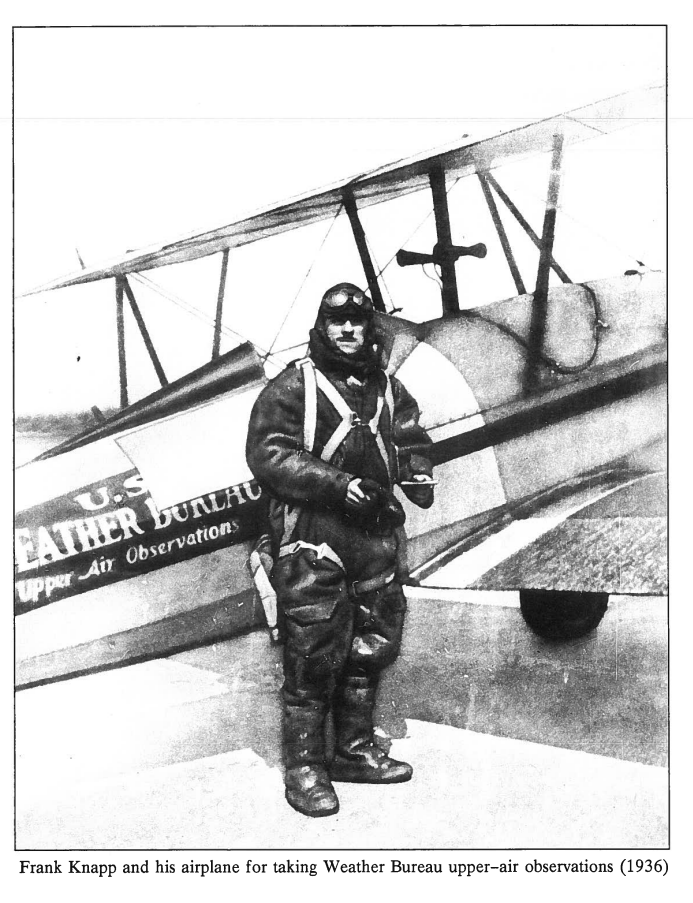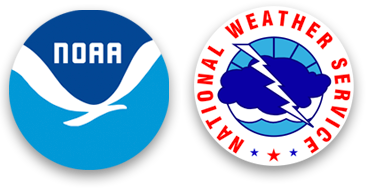Close Calls During Weather Flights - National Weather Service Heritage

Close Calls During Weather Flights
By NWS Heritage Projects Staff ( NWS.HeritageProjects.Team@noaa.gov)Editor’s Note: The following story first appeared in National Weather Service Snapshots Portraits of a Rich Heritage by Gary K. Grice, 1991.
Frank Knapp flew for the Weather Bureau during the mid 1930s. One December morning, Mr. Knapp took off for a Weather Bureau upper-air observation in his J5 Eaglerock biplane. At 1,500 feet, he leveled off to give the meteorograph time to stabilize. This flight was smooth, but he once hit turbulence so severe that “...I had to hold on the cross braces to keep from being thrown from the plane.”
Knapp does not remember much about this particular flight. The meteorograph showed that he climbed to 14,000 feet, then he crashed. He survived the crash, but sustained a broken hip, two broken arms, a broken collar bone, and a mangled left arm. He was paid $14 for his flight since he climbed only to 14,000 feet.
A friend of Mr. Knapp agreed to take his subsequent flights. On his second flight, the weather closed in behind him and his radio went out. Mr Knapp’s friend headed west, hoping to find a break in the weather. Finally, he ran out of gas and had to bail out. His parachute split but he survived the fall.
Knapp had at least one more major scare while working for the Weather Bureau. One day, while the airplane was climbing, Knapp became very cold. According to Knapp:
“I turned the heater on at 10,000 feet. At 13,000, I leveled off for the last time before reaching altitude (17,000 feet), and I began to feel funny. The air was smooth. I put the pipe (this airplane was equipped with oxygen) in my mouth and began to breathe oxygen. Pretty soon my fingers were numb. It was getting worse. I cut the throttle and dived. My arms doubled up and my stomach was sucking in. I was fighting to breathe. There was a tightness in my forehead. I watched the altimeter unwind. I was afraid of passing out. As I got lower, I could feel my breathing coming back, I got the use of my arms but not my fingers. I made a hell of a landing. I got out and told somebody something was wrong. After I got to feeling better, we found the trouble. The exhaust was leaking. I had been getting carbon monoxide. Up there in thin air, it gets at you in a hurry.”
Another pilot fell nearly 16,000 feet when he fainted from lack of oxygen and lost control of the airplane. The Weather Bureau airplane went into a spin, but the pilot regained consciousness just in time to “pancake” the airplane into a tree. The pilot suffered a broken shoulder.
